Commercial HVAC Replacement Cost Estimator
Replacing a commercial HVAC system is a significant investment that can greatly impact the comfort, energy efficiency, and overall functionality of a commercial building. Understanding the costs associated with this replacement is crucial for effective budgeting and planning. In this blog, we will explore the various factors that contribute to the cost of replacing a commercial HVAC system, using a cost estimator as a reference. By breaking down these costs, you can make informed decisions and ensure a successful and cost-effective HVAC replacement project. The goal is to provide comprehensive insights to help you navigate this essential upgrade for your commercial property.
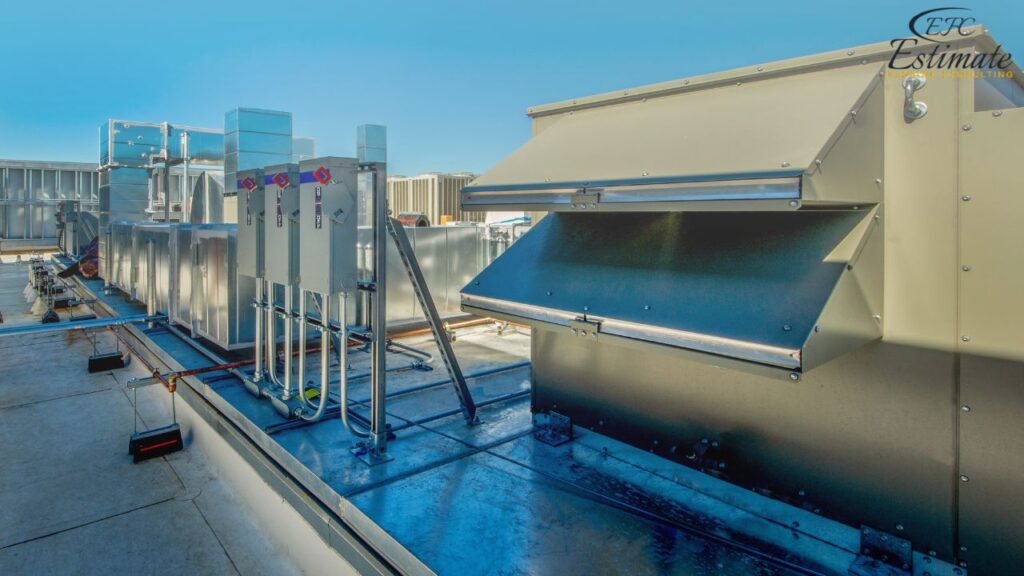
Benefits of Replacing a Commercial HVAC System
Investing in a new commercial HVAC system offers several benefits:
- Improved Energy Efficiency: Modern HVAC systems are designed to be more energy-efficient, which can lead to significant savings on utility bills. Advanced technologies and better design improve energy consumption, reducing the overall operational costs for the building. These systems often include features such as variable speed motors and high-efficiency compressors, which optimize energy use and provide precise temperature control.
- Enhanced Comfort: A new HVAC system can provide more consistent and reliable temperature control, improving comfort for employees, clients, and customers. Enhanced comfort can lead to increased productivity and a better working environment. Improved air quality and humidity control are additional benefits that contribute to a healthier and more comfortable indoor environment.
- Reduced Maintenance Costs: Older HVAC systems often require frequent repairs and maintenance. A new system can reduce these costs and provide more reliable performance. Reduced maintenance needs mean fewer disruptions and lower costs over the system’s lifespan. New systems are also less likely to experience breakdowns, which can be costly and inconvenient.
- Environmental Benefits: Energy-efficient HVAC systems have a lower environmental impact, helping businesses reduce their carbon footprint. This can enhance your company’s sustainability efforts and reputation. By choosing eco-friendly systems, you contribute to a greener environment and may qualify for government incentives or rebates aimed at promoting energy efficiency.
Average Cost Breakdown
The cost of replacing a commercial HVAC system can vary widely based on several factors, including the size of the building, the type of system, and the complexity of the installation. On average, the cost to replace a commercial HVAC system can range from $21,000 to $140,000 or more. Here’s a general cost breakdown:
Component | Estimated Cost (in dollars) |
Equipment | $8,400 – $56,000 |
Labor | $8,400 – $49,000 |
Additional Costs | $4,200 – $35,000 |
Total Cost | $21,000 – $140,000+ |
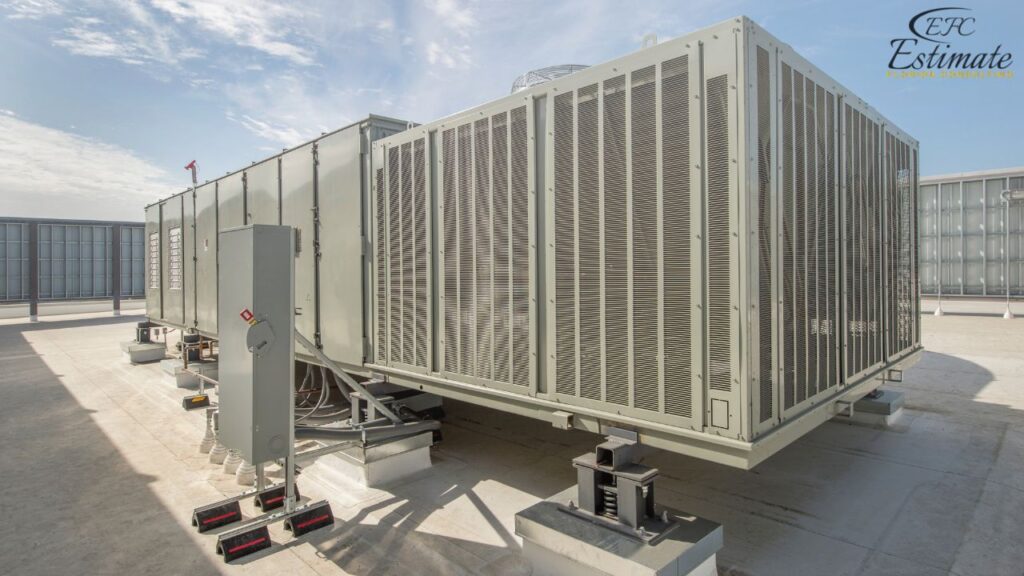
Cost Breakdown by Component
Equipment
The cost of equipment includes the HVAC units, thermostats, ductwork, and other necessary components. High-quality equipment can increase the cost but provide better performance and durability. Investing in reliable and efficient equipment ensures long-term savings and fewer maintenance issues. Modern equipment often comes with advanced technology that enhances energy efficiency and provides better control over the indoor environment.
Cost Breakdown for Equipment:
Cost Component | Estimated Cost (in dollars) |
HVAC Units (RTUs, Split Systems, VRF, Chillers) | $7,000 – $42,000 |
Thermostats and Controls | $700 – $2,800 |
Ductwork and Ventilation | $700 – $11,200 |
Total Cost | $8,400 – $56,000 |
Labor
Labor costs include the time and expertise required to remove the old system, install the new system, and ensure proper operation. The total labor cost can vary based on the complexity of the project and the rates charged by local contractors. Skilled labor ensures the system is installed correctly and safely, providing reliable performance. Experienced technicians can also offer valuable insights and recommendations to optimize the system’s performance.
Cost Breakdown for Labor:
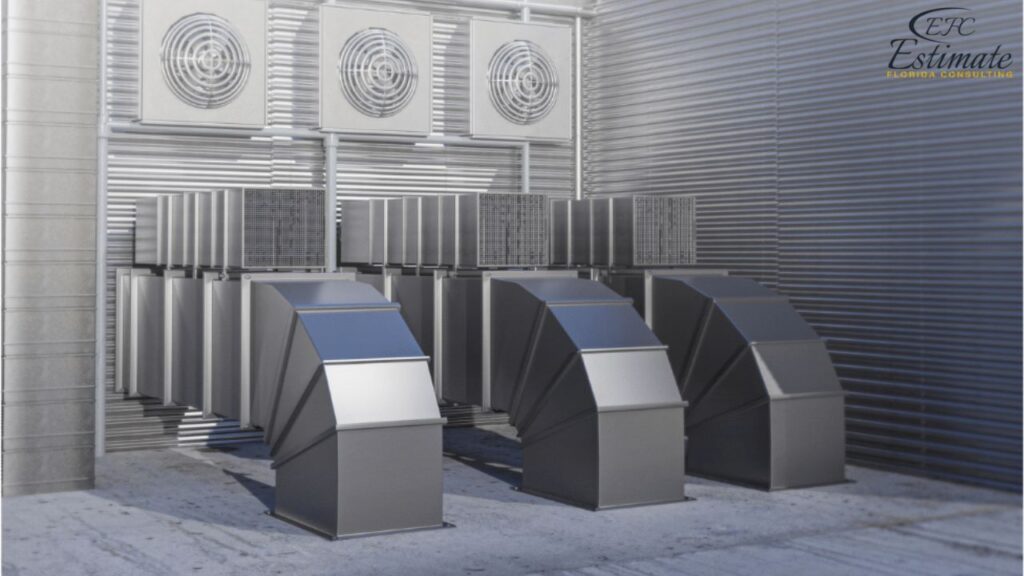
Cost Component | Estimated Cost (in dollars) |
Removal of Old System | $1,400 – $7,000 |
Installation of New System | $5,600 – $28,000 |
Testing and Calibration | $1,400 – $14,000 |
Total Cost | $8,400 – $49,000 |
Additional Costs
Additional costs can include permits, inspections, energy efficiency upgrades, and other related expenses. These costs can vary depending on local regulations and the specific requirements of the project. Planning for these expenses ensures that the project complies with all regulations and operates efficiently. Including a contingency fund in your budget can help cover unexpected costs and ensure the project stays on track.
Cost Breakdown for Additional Costs:
Cost Component | Estimated Cost (in dollars) |
Permits and Inspections | $700 – $3,500 |
Energy Efficiency Upgrades | $1,400 – $14,000 |
Contingency Fund | $2,100 – $17,500 |
Total Cost | $4,200 – $35,000 |
Download Template For HVAC Project Breakdown
- Materials list updated to the zip code
- Fast delivery
- Data base of general contractors and sub-contractors
- Local estimators
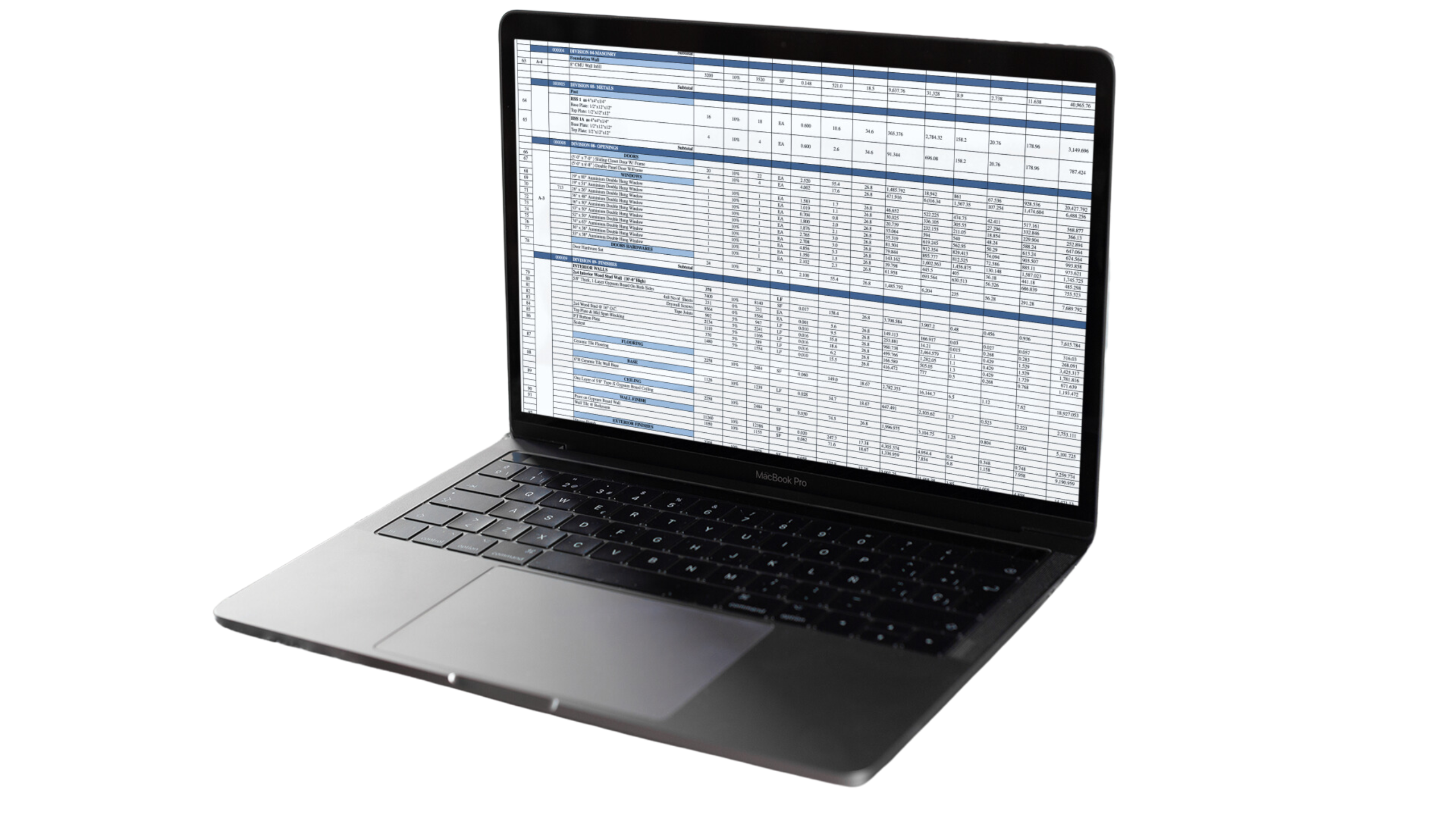
Factors Affecting the Cost of Replacing a Commercial HVAC System
Several factors can influence the cost of replacing a commercial HVAC system, including:
Size of the Building
The size of the building is a primary factor in determining the cost. Larger buildings require larger and more complex HVAC systems, increasing the overall expense. For example, replacing the HVAC system in a small office building may cost between $21,000 and $42,000, while a larger commercial building could cost between $70,000 and $140,000 or more. Accurate measurements and understanding of the building’s heating and cooling needs are essential for obtaining precise cost estimates. The larger the space, the more extensive the system needed to adequately control the indoor climate, which directly impacts both material and labor costs.
Type of HVAC System
The type of HVAC system selected can significantly impact the cost. Common types of commercial HVAC systems include:
- Rooftop Units (RTUs): These are common in commercial buildings and can cost between $8,400 and $21,000 per unit. RTUs are easy to install and maintain, making them a popular choice for many businesses. They offer a convenient and efficient solution for buildings with limited indoor space, as they are installed on the roof.
- Split Systems: These systems have separate indoor and outdoor units and can cost between $14,000 and $28,000. Split systems offer flexibility and can be used in various building configurations. They are ideal for buildings that require specific climate control in different areas, providing tailored solutions for diverse needs.
- Variable Refrigerant Flow (VRF) Systems: VRF systems are energy-efficient and offer precise temperature control but are more expensive, ranging from $28,000 to $70,000 or more. VRF systems are ideal for larger buildings with varying heating and cooling needs. They allow individual zone control, enabling different areas to be heated or cooled independently, maximizing comfort and efficiency.
- Chiller Systems: Chiller systems are used for large buildings and industrial applications, with costs ranging from $42,000 to $140,000 or more. Chillers provide efficient cooling for large spaces and are commonly used in hospitals, manufacturing facilities, and large office buildings. They are known for their ability to handle high cooling loads, making them suitable for environments with significant heat generation.
Complexity of the Installation
The complexity of the installation can also affect the cost. Factors such as the building’s layout, existing ductwork, and accessibility can influence the labor and time required for installation. Buildings with complex layouts or outdated ductwork may require additional work, increasing the overall cost. Additionally, if the building is occupied during the installation, there may be additional costs for minimizing disruptions and ensuring safety. Proper planning and coordination are essential to manage these complexities and keep the project on track.
Energy Efficiency and Features
Opting for energy-efficient HVAC systems with advanced features can increase the initial cost but provide long-term savings. Features such as programmable thermostats, zoning systems, and advanced filtration can enhance performance and comfort. Investing in energy-efficient systems can lead to significant savings on utility bills and qualify for rebates and incentives, reducing the overall cost. Advanced features also contribute to a healthier indoor environment by improving air quality and providing better control over the building’s climate.
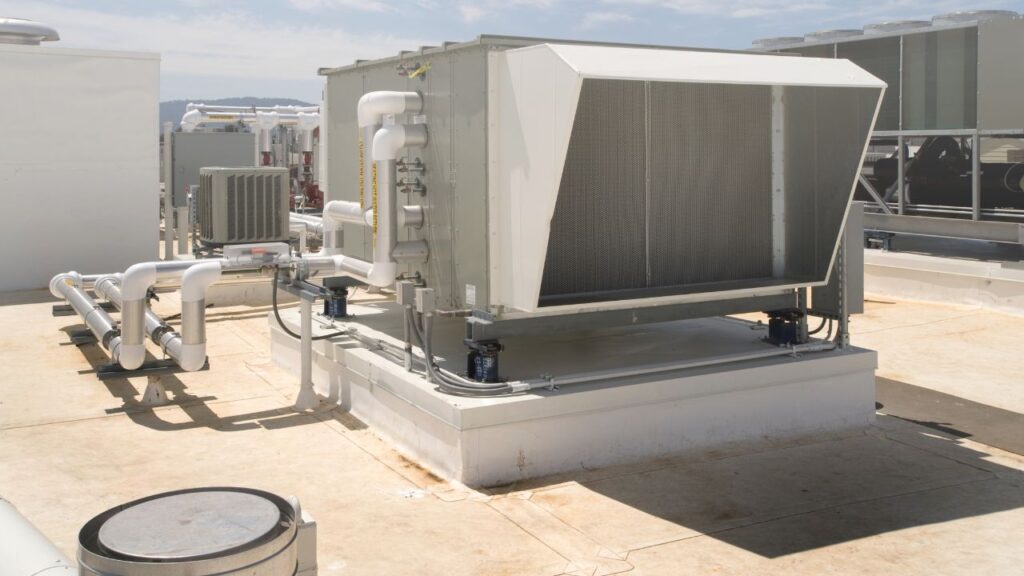
Using a Commercial HVAC Replacement Cost Estimator
A commercial HVAC replacement cost estimator can help you plan and budget your project effectively. Here’s how to use it:
- Input Building Details: Enter the size, type, and location of the building to get a customized estimate. Accurate information ensures that the estimate reflects the specific needs of your building. Providing detailed information about the building’s layout and current HVAC system helps generate a more precise estimate.
- Select HVAC System Type: Choose the type of HVAC system you need, such as RTUs, split systems, VRF systems, or chillers. The estimator will provide cost ranges based on the selected system. Understanding the different types of systems and their benefits can help you make an informed decision that meets your building’s requirements.
- Customize Features: Add any additional features or energy efficiency upgrades to see how they affect the overall cost. This customization helps you balance initial costs with long-term savings. Including advanced features can enhance the system’s performance and provide greater comfort and efficiency.
- Review Cost Breakdown: Review the detailed cost breakdown, including equipment, labor, and additional costs. A clear breakdown helps you understand where your money is going and identify potential areas for savings. This comprehensive view allows you to make informed decisions and manage your budget effectively.
- Plan and Budget: Use the cost estimate to plan and budget your project, considering any additional costs such as permits and contingency funds. Proper planning ensures that you stay within your budget and avoid unexpected expenses. Thorough budgeting helps prevent financial surprises and ensures the project is completed successfully.
Get 5 New Leads Next 7Days With Our System
- Multi-Family Building
- Hotel Building
- Hospital Building
- Warehouse Building
- High-Rise Building
- Shopping Complex
Example Cost Calculation
Let’s consider an example of replacing an HVAC system in a 10,000 square foot office building with a VRF system:
Component | Estimated Cost (in dollars) |
Equipment | $28,000 – $70,000 |
Labor | $25,200 – $42,000 |
Permits and Inspections | $1,400 – $3,500 |
Energy Efficiency Upgrades | $2,800 – $11,200 |
Contingency Fund | $4,200 – $17,500 |
Total Cost | $61,600 – $144,200 |
Conclusion
Replacing a commercial HVAC system is a significant investment that requires careful planning and consideration of various factors. The cost can vary widely depending on the size of the building, the type of system, the complexity of the installation, and additional features. By using a commercial HVAC replacement cost estimator, you can effectively plan and budget your project, ensuring a successful and cost-effective replacement. Investing in high-quality, energy-efficient systems and professional services can provide a durable, reliable, and efficient HVAC solution that meets your needs and enhances the comfort and performance of your commercial building.
Frequently Asked Questions (FAQs)
The lifespan of a commercial HVAC system can vary, but most systems last between 15 to 20 years. Regular maintenance can help extend the life of the system, but eventually, replacement is necessary to ensure continued efficiency and performance.
Common signs include frequent breakdowns, increased energy bills, uneven heating or cooling, and poor air quality. If your system requires constant repairs or fails to maintain a comfortable indoor environment, it may be time for a replacement.
Upgrading certain components, such as adding energy-efficient features or improving ductwork, can enhance the performance of your existing system. However, if the system is old and inefficient, a full replacement may be more cost-effective in the long run.
Choose systems with high SEER (Seasonal Energy Efficiency Ratio) ratings and look for ENERGY STAR-certified products. Regular maintenance and proper installation are also crucial for maximizing energy efficiency.
Yes, many financing options are available, including loans, leasing, and energy-efficient rebates or incentives. It’s important to explore different financing options to find one that fits your budget and financial situation.
Google Reviews

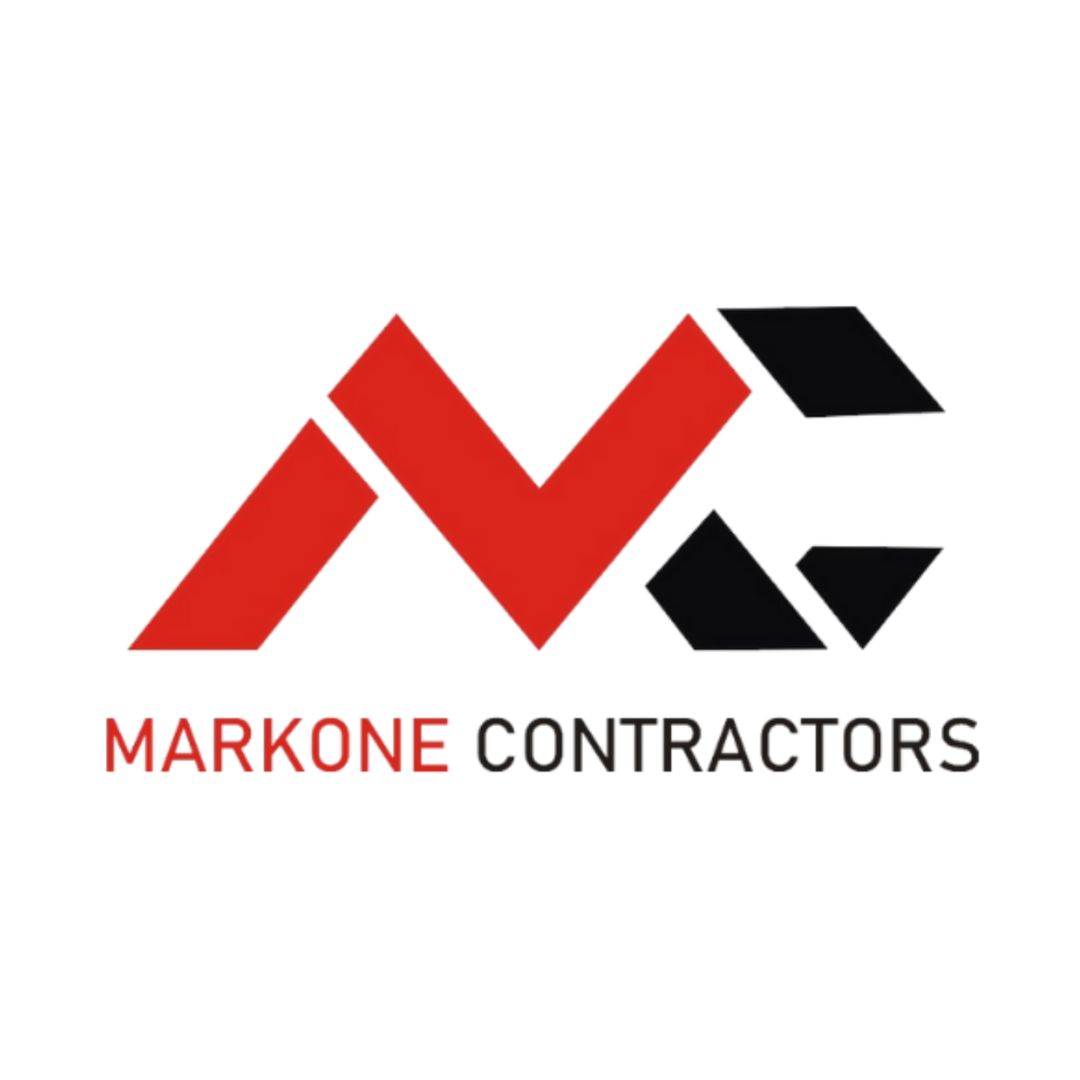

Process To Get HVAC Replacement Cost Estimate Report
Here I am going to share some steps to get your HVAC replacement cost estimate report.
-
You need to send your plan to us.
You can send us your plan on info@estimatorflorida.com
-
You receive a quote for your project.
Before starting your project, we send you a quote for your service. That quote will have detailed information about your project. Here you will get information about the size, difficulty, complexity and bid date when determining pricing.
-
Get Estimate Report
Our team will takeoff and estimate your project. When we deliver you’ll receive a PDF and an Excel file of your estimate. We can also offer construction lead generation services for the jobs you’d like to pursue further.

